Future Faith Session 2
Stacy Ikard
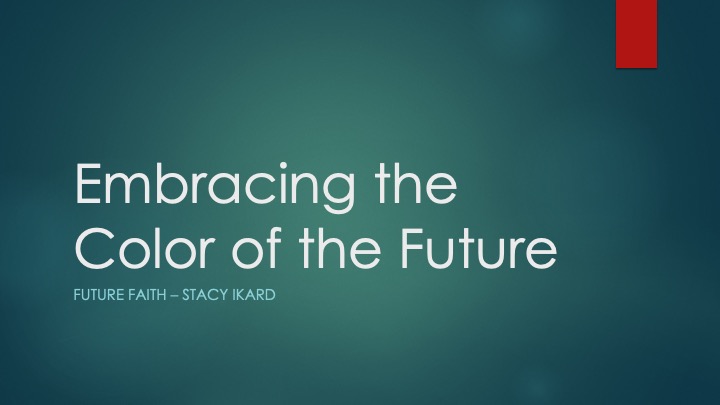
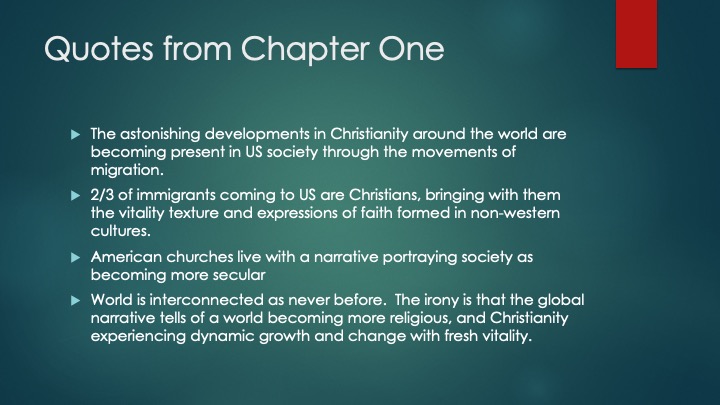
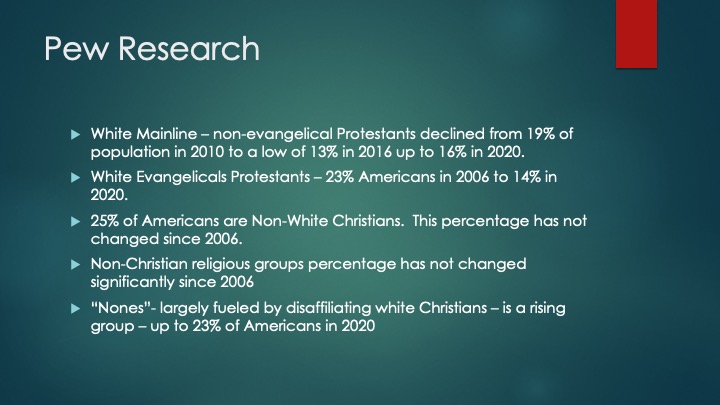
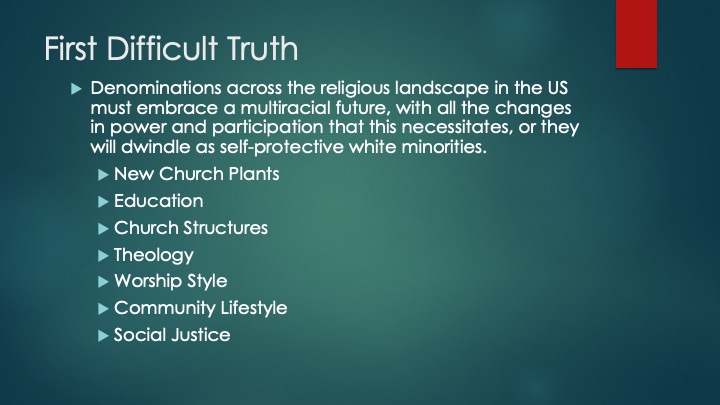
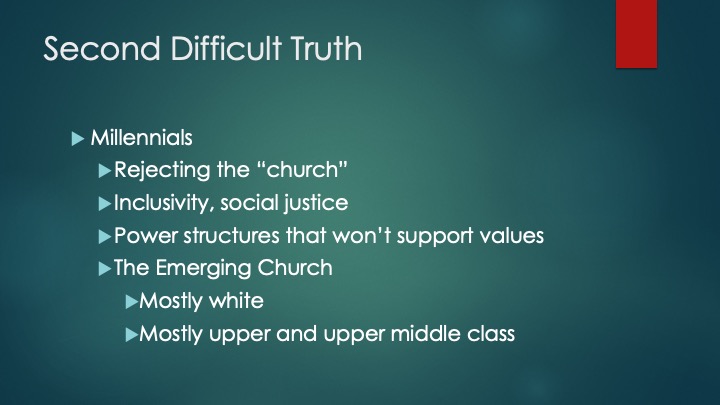
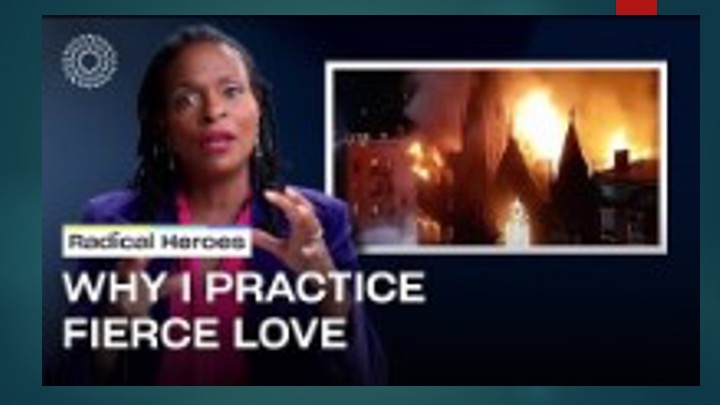
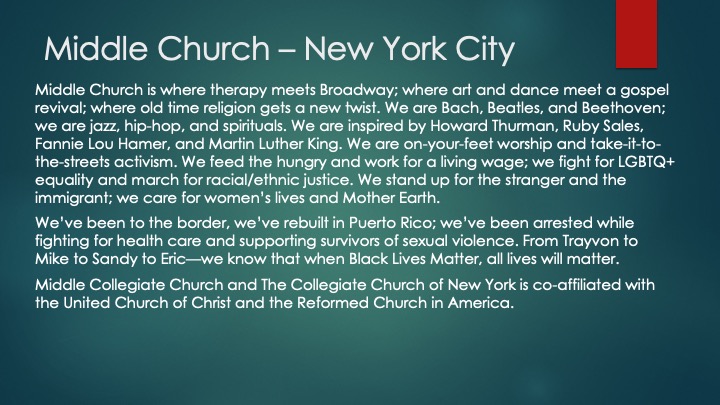
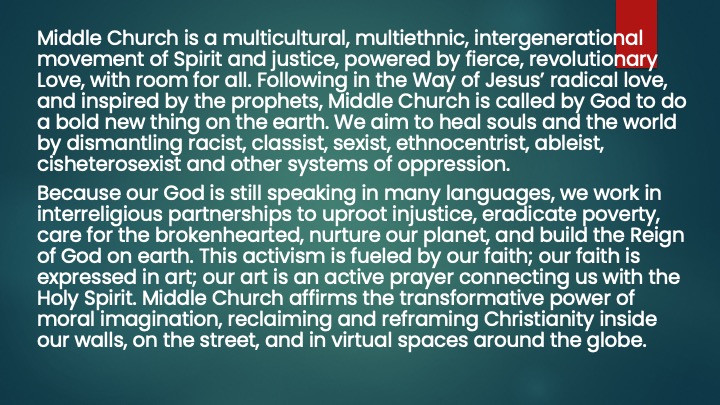
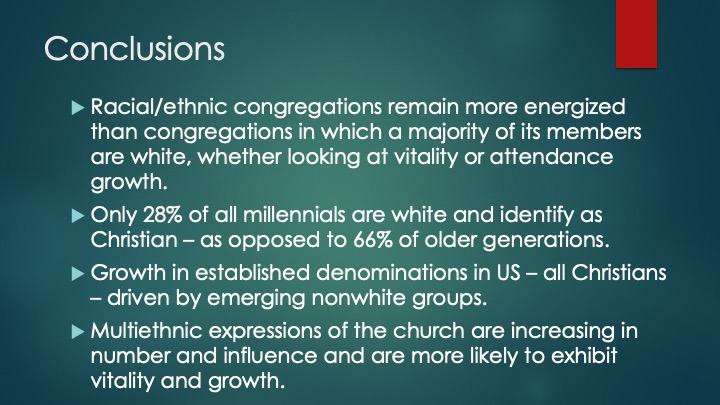
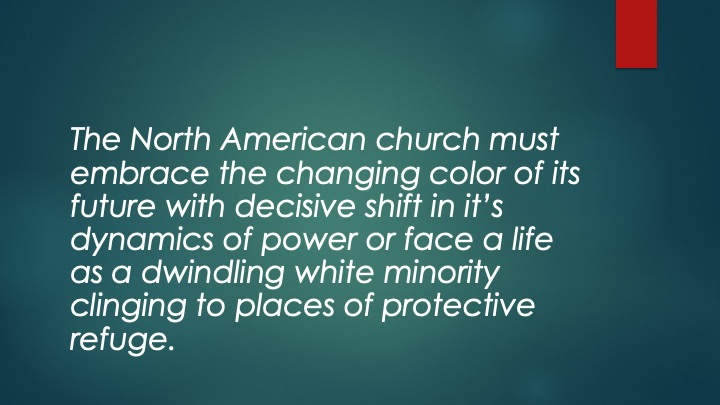
Future Faith Session 2
Embracing the Color of the Future
Future Faith – Stacy Ikard
Quotes from Chapter One
The astonishing developments in Christianity around the world are becoming present in US society through the movements of migration.
2/3 of immigrants coming to US are Christians, bringing with them the vitality texture and expressions of faith formed in non-western cultures.
American churches live with a narrative portraying society as becoming more secular
World is interconnected as never before. The irony is that the global narrative tells of a world becoming more religious, and Christianity experiencing dynamic growth and change with fresh vitality.
Pew Research
White Mainline – non-evangelical Protestants declined from 19% of population in 2010 to a low of 13% in 2016 up to 16% in 2020.
White Evangelicals Protestants – 23% Americans in 2006 to 14% in 2020.
25% of Americans are Non-White Christians. This percentage has not changed since 2006.
Non-Christian religious groups percentage has not changed significantly since 2006
“Nones”- largely fueled by disaffiliating white Christians – is a rising group – up to 23% of Americans in 2020
First Difficult Truth
Denominations across the religious landscape in the US must embrace a multiracial future, with all the changes in power and participation that this necessitates, or they will dwindle as self-protective white minorities.
New Church Plants
Education
Church Structures
Theology
Worship Style
Community Lifestyle
Social Justice
Second Difficult Truth
Millennials
Rejecting the “church”
Inclusivity, social justice
Power structures that won’t support values
The Emerging Church
Mostly white
Mostly upper and upper middle class
Middle Church – New York City
Middle Church is where therapy meets Broadway; where art and dance meet a gospel revival; where old time religion gets a new twist. We are Bach, Beatles, and Beethoven; we are jazz, hip-hop, and spirituals. We are inspired by Howard Thurman, Ruby Sales, Fannie Lou Hamer, and Martin Luther King. We are on-your-feet worship and take-it-to-the-streets activism. We feed the hungry and work for a living wage; we fight for LGBTQ+ equality and march for racial/ethnic justice. We stand up for the stranger and the immigrant; we care for women’s lives and Mother Earth.
We’ve been to the border, we’ve rebuilt in Puerto Rico; we’ve been arrested while fighting for health care and supporting survivors of sexual violence. From Trayvon to Mike to Sandy to Eric—we know that when Black Lives Matter, all lives will matter.
Middle Collegiate Church and The Collegiate Church of New York is co-affiliated with the United Church of Christ and the Reformed Church in America.
Middle Church is a multicultural, multiethnic, intergenerational movement of Spirit and justice, powered by fierce, revolutionary Love, with room for all. Following in the Way of Jesus’ radical love, and inspired by the prophets, Middle Church is called by God to do a bold new thing on the earth. We aim to heal souls and the world by dismantling racist, classist, sexist, ethnocentrist, ableist, cisheterosexist and other systems of oppression.
Because our God is still speaking in many languages, we work in interreligious partnerships to uproot injustice, eradicate poverty, care for the brokenhearted, nurture our planet, and build the Reign of God on earth. This activism is fueled by our faith; our faith is expressed in art; our art is an active prayer connecting us with the Holy Spirit. Middle Church affirms the transformative power of moral imagination, reclaiming and reframing Christianity inside our walls, on the street, and in virtual spaces around the globe.
Conclusions
Racial/ethnic congregations remain more energized than congregations in which a majority of its members are white, whether looking at vitality or attendance growth.
Only 28% of all millennials are white and identify as Christian – as opposed to 66% of older generations.
Growth in established denominations in US – all Christians – driven by emerging nonwhite groups.
Multiethnic expressions of the church are increasing in number and influence and are more likely to exhibit vitality and growth.
Summary
The North American church must embrace the changing color of its future with decisive shift in it’s dynamics of power or face a life as a dwindling white minority clinging to places of protective refuge.